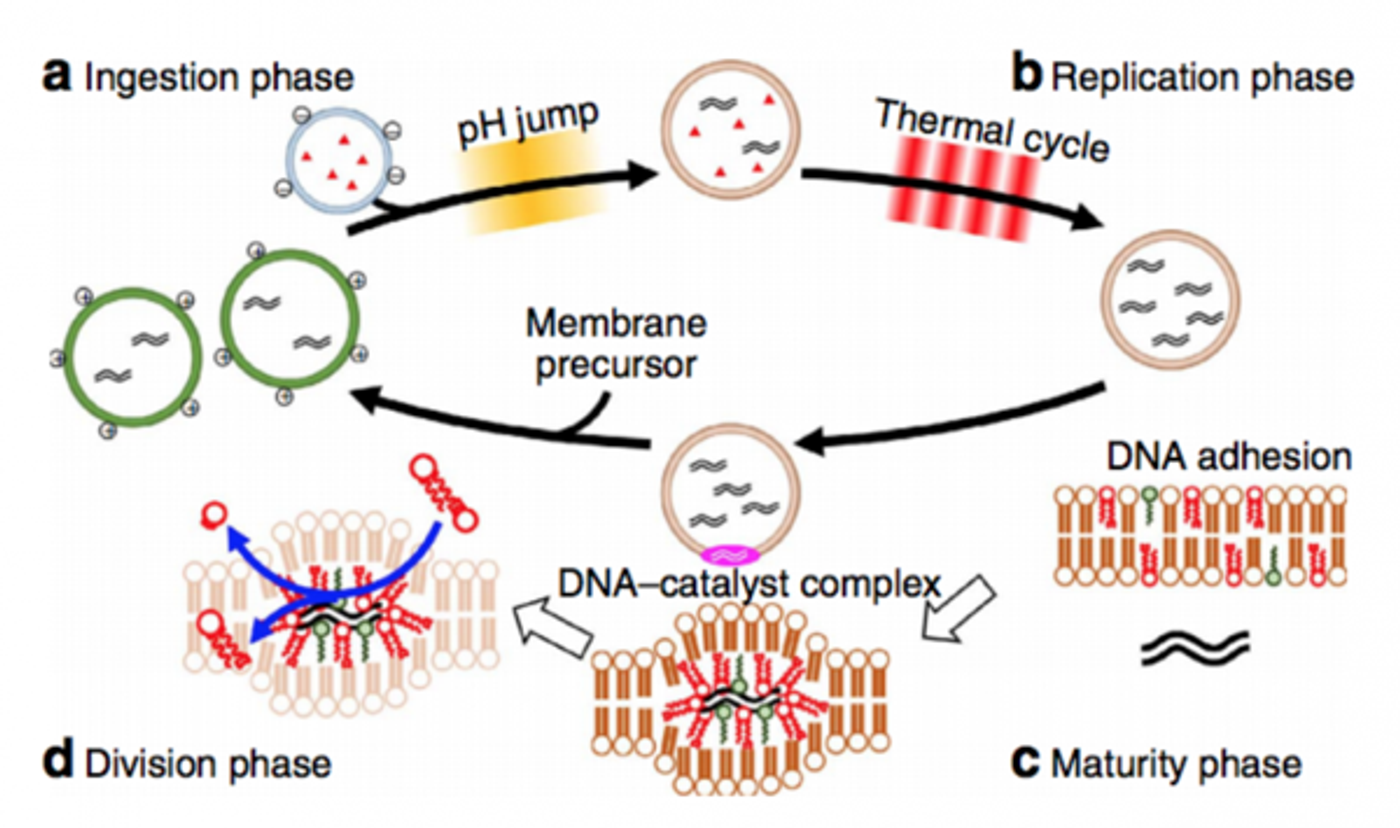Researchers Create an Artificial Protocell That Can Divide
It’s not exactly known when in the history of life that cells went from being not alive, to alive. But despite not being alive, even early cells were able to replicate and divide, assuming the conditions around them were adequate enough to jump-start the process.
Researchers based out of Kanagawa University in Japan have reportedly been able to re-create a non-living artificial protocell, which isn’t alive, but under the the proper circumstances, can still be forced to divide and replicate. Their findings have been published in Nature Communications.
The aim of our investigation was to explore the universal concept of life by embodying a model protocell that demonstrates how collaborative dynamics emerged from nonliving matter under certain circumstances. To achieve this goal, we selected well-defined suitable lipids and macromolecules, including newly designed ones, and constructed a giant vesicle (GV)-based model protocell that links self-replication of information molecules (RNA/DNA) with the self-reproduction of a compartment (GV).
The division process of these artificial protocells is exacerbated by the surrounding environment, and is set off by triggers such as the surrounding pH level. It is believed that before cells on Earth were actually living cells and able to divide on their own free will, non-living cells behaved in a similar way, relying on the conditions of the environment around them to help them divide and replicate.

It wasn’t until cells became, for lack of a better term, ‘self-aware,’ and became able to reproduce on their own independent of the conditions around them, that scientists believe cells became “alive” to create the multi-cellular organisms that we know to exist today.
The artificial protocell the researchers created is not a replica of a real living cell, but its construction can be compared to one. For example, its construction is comprised of a lipid-based exterior, which plays the role of the cell membrane in a real living cell, and the interior is filled with actual DNA, as well as proteins that the protocell needs to give it its qualities.
Although these cells are not alive, the DNA they have inside of them plays the key role in telling the artificial protocell to divide. As a result, the DNA can make the artificial cell divide when the researchers change the pH level around the cell, because that’s what a real cell with that DNA strand would do too.
One of the tricky parts to making everything work right in this experiment was finding a way to help these artificial protocells replenish the supplies that are lost in the middle of dividing. These artificial protocells cannot self-sustain because they run out of supplies while dividing. Because of this, the scientists had to design a type of ‘delivery’ cell that the protocells could work with to get back the supplies they need to divide more in the future.
To replenish the depleted substrates of daughter GVs, we constructed a ‘vesicular delivery system’ in which a ‘target’ GV containing all of the reagents needed for DNA replication, except for dNTPs, adhered and fused with a ‘conveyer’ GV filled with dNTPs when triggered by a pH change of the vesicular dispersion. Thus, the daughter model protocell could potentially acquire a sustainable recursive ability to proliferate when external stimuli, such as sequential thermal cycles, and the addition of V* were applied to it.
This proof of concept gives researchers a starting point for understanding how cells were able to divide before they became alive in the world’s harsh environment leading up to the first signs of life.
Source: Nature Communications









